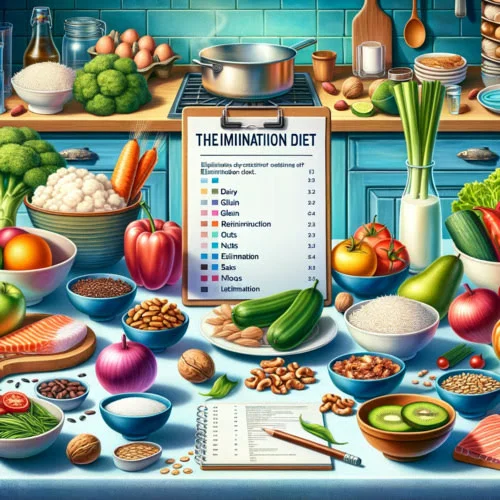Reducing salt intake is significant for public health. High sodium consumption is one of the primary causes of cardiovascular diseases, which are leading causes of mortality worldwide. According to the World Health Organization (WHO), reducing salt in the diet can significantly decrease the risk of developing hypertension and other related diseases. Health policies in many countries include programs aimed at reducing salt intake to improve public health and alleviate the burden on healthcare systems. This article will explore how to reduce salt consumption and provide you with several practical tips on the topic.
Salt Consumption and Health Risks
The epidemiology of salt consumption reveals that in most countries, people consume significantly more salt than recommended by the WHO. The WHO’s guidelines suggest that sodium intake should not exceed 2 grams per day, which is equivalent to about 5 grams of salt. However, actual consumption often exceeds this norm by twice.
The link between salt intake and diseases is well-documented. High sodium consumption is directly associated with increased blood pressure, a major risk factor for the development of cardiovascular diseases. Reducing salt intake can lead to a significant decrease in blood pressure, which in turn reduces the risk of strokes and heart attacks. Therefore, reducing salt consumption is considered an important preventive measure to improve public health.
WHO Recommendations on Salt Consumption
The World Health Organization (WHO) provides clear guidelines on salt consumption for different age groups. For adults, the WHO recommends limiting sodium intake to 2 grams per day, which is equivalent to about 5 grams of salt. For children, these norms are lower and age-dependent, but the main rule is that children’s salt intake should be significantly lower than that of adults.
Additionally, the WHO emphasizes the importance of iodized salt. Iodine is an essential micronutrient needed for the normal function of the thyroid gland and preventing diseases related to iodine deficiency, such as goiter and cognitive impairment in children. The use of iodized salt is an effective and simple measure to prevent these diseases, especially in regions where iodine deficiency is a common problem. Thus, the policy of salt iodization plays a key role in maintaining the overall health of the population alongside recommendations for reducing overall salt consumption.
Practical Tips for Reducing Salt Intake

Reducing salt intake in daily life can significantly improve your health. Here are some practical tips to help you achieve this goal.
The first step is to learn to read product labels. Many processed foods contain a high amount of sodium, so it’s important to pay attention to the salt content of the products you buy. Read labels and try to choose those with less salt. Look for products labeled “low sodium” or “no salt added.”
The second tip is to choose low-salt products. This is especially important when buying ready meals, canned goods, and convenience foods. Instead, opt for fresh vegetables, fruits, lean proteins, and whole grains. Cooking at home also allows you to control the amount of salt you add. Use spices, herbs, and lemon juice to enhance the flavor of dishes without adding extra salt.
By following these recommendations, you can significantly reduce your salt intake and improve your health, thereby reducing the risk of developing cardiovascular diseases and other problems associated with excessive sodium consumption.
National-Level Strategies
At the national level, various strategies and initiatives are aimed at reducing salt consumption among the population. Health policymakers develop and implement programs that include both educational campaigns to raise awareness and regulatory measures.
One of the main measures is the development and implementation of standards for salt content in food products. Many countries set maximum permissible levels of salt in various products, which helps reduce the overall sodium intake of the population. In addition, mandatory iodization of salt has become standard practice in many countries, aiding in the fight against iodine deficiency.
International experience shows that a comprehensive approach to reducing salt intake can be very effective. For example, Finland has successfully implemented programs that include collaboration with the food industry to reduce the salt content in products, widespread educational efforts, and monitoring of sodium consumption among the population. As a result of these efforts, there has been a significant reduction in hypertension and cardiovascular diseases.
Other countries, such as the United Kingdom and Australia, have also made significant progress thanks to the development of national strategies to reduce salt intake, which include both voluntary and mandatory measures for food manufacturers. These examples demonstrate that coordinated efforts at the national level can significantly impact public health improvement and reduce morbidity associated with high salt consumption.
Conclusion
Combating excessive salt intake requires collaborative efforts at various societal levels. Individual actions, such as making informed food choices and reading labels, can significantly reduce sodium consumption and improve health. However, to achieve significant and sustainable results, coordinated actions at the national level are necessary.
Health policymakers play a crucial role in this process by developing and implementing programs and initiatives to reduce salt intake. It is vital that these programs include educational components to raise population awareness, as well as regulatory measures aimed at reducing the salt content in food products. International experience demonstrates that such comprehensive approaches can lead to a significant reduction in cardiovascular disease incidence and improve overall population health.
Joint efforts from all stakeholders—from individual consumers to government bodies and international organizations—are essential for success in the fight against excessive salt consumption. Only by working together can we create conditions for a healthier future and significantly reduce the burden of diseases associated with high sodium intake.















